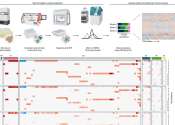A reduction in Iberian pork preservatives is achieved thanks to a yeast
In the face of European regulations mandating salt and nitrite reductions in food, a team from the University of Cordoba has tested the potential of a yeast as a natural preservative in Iberian pork loin from the Pedroches ...









